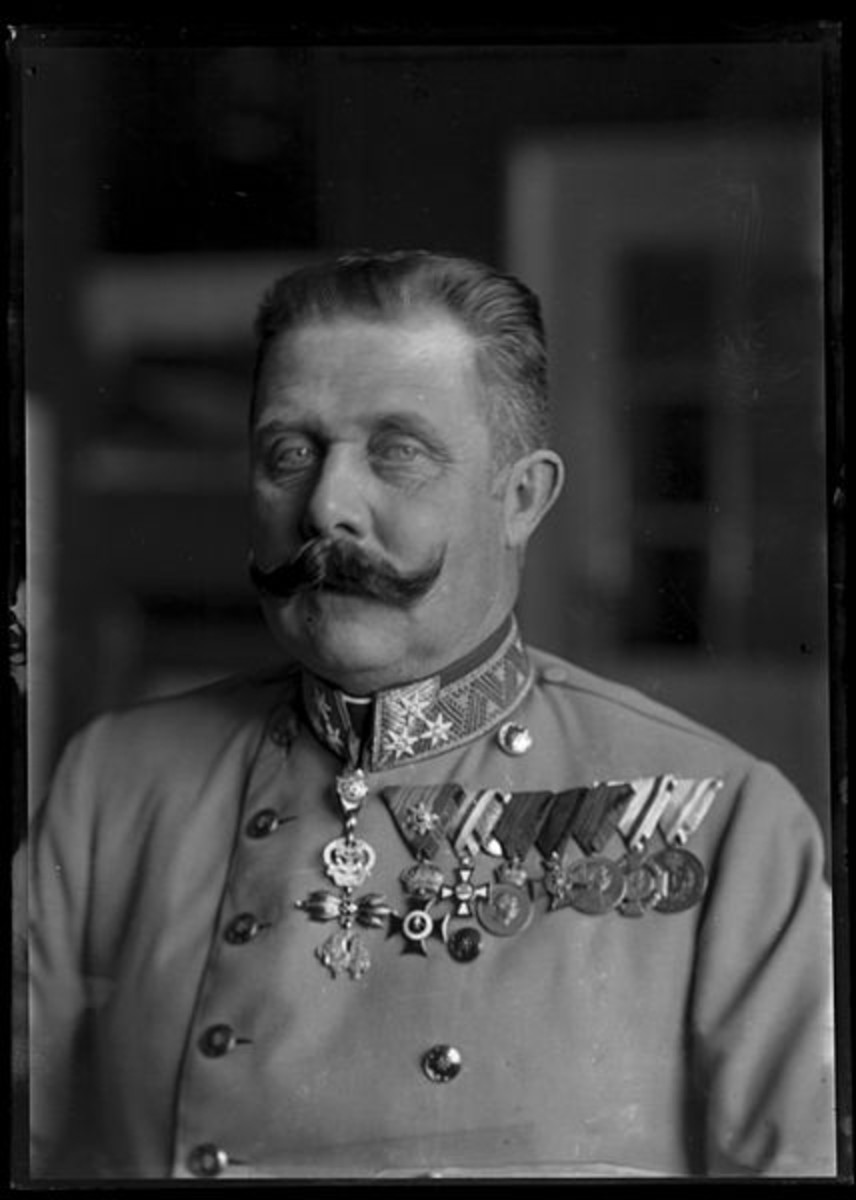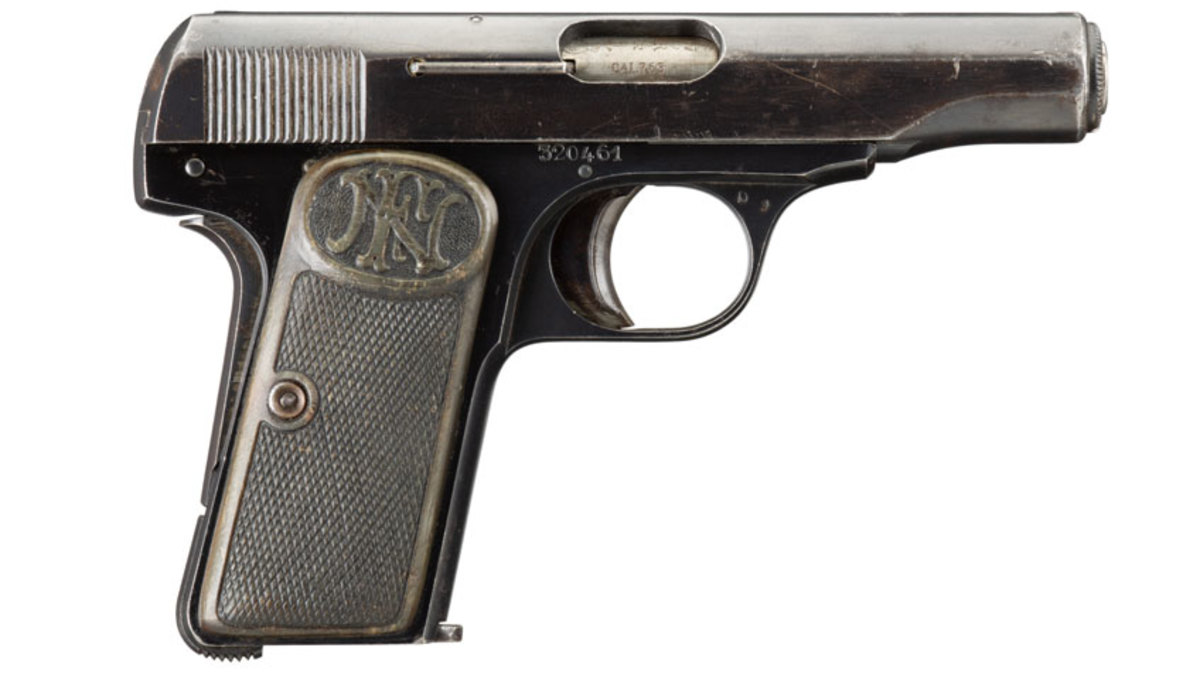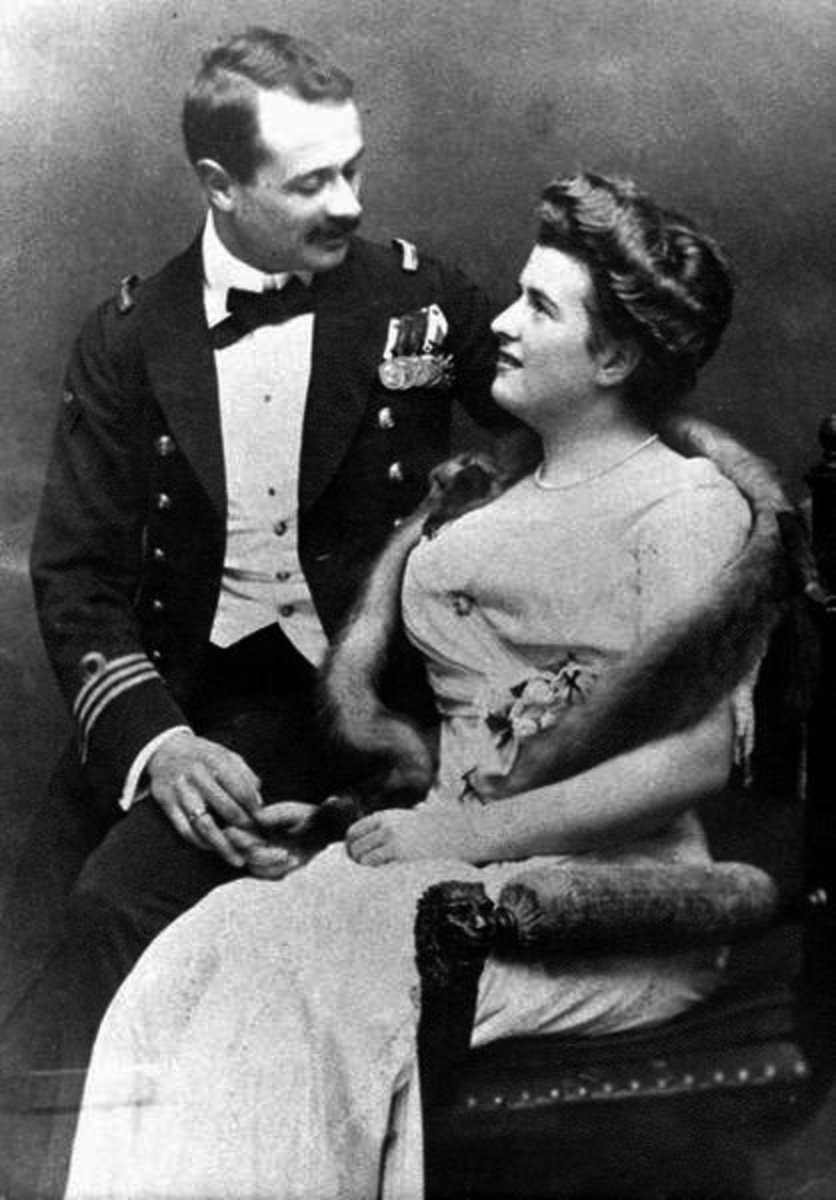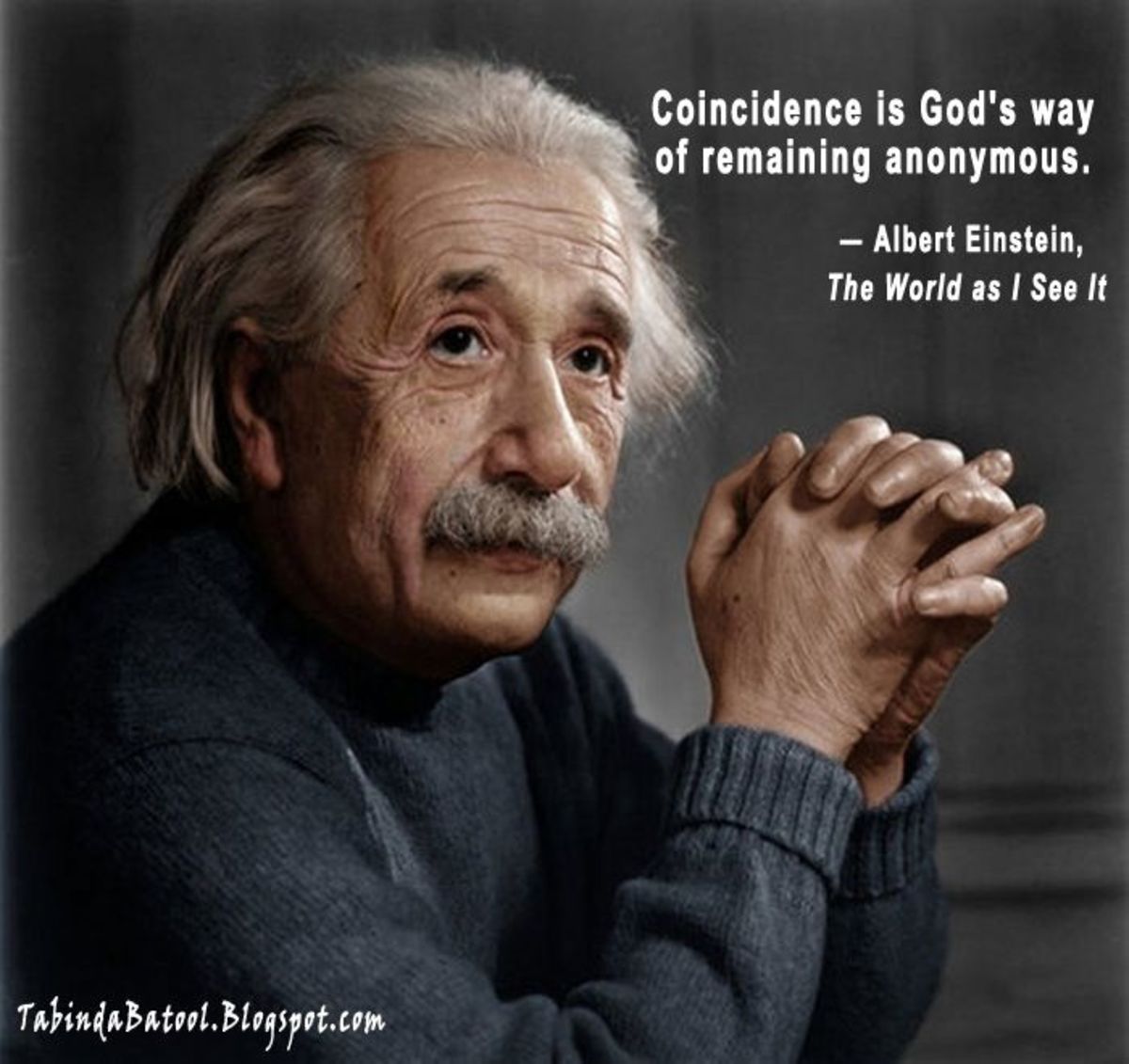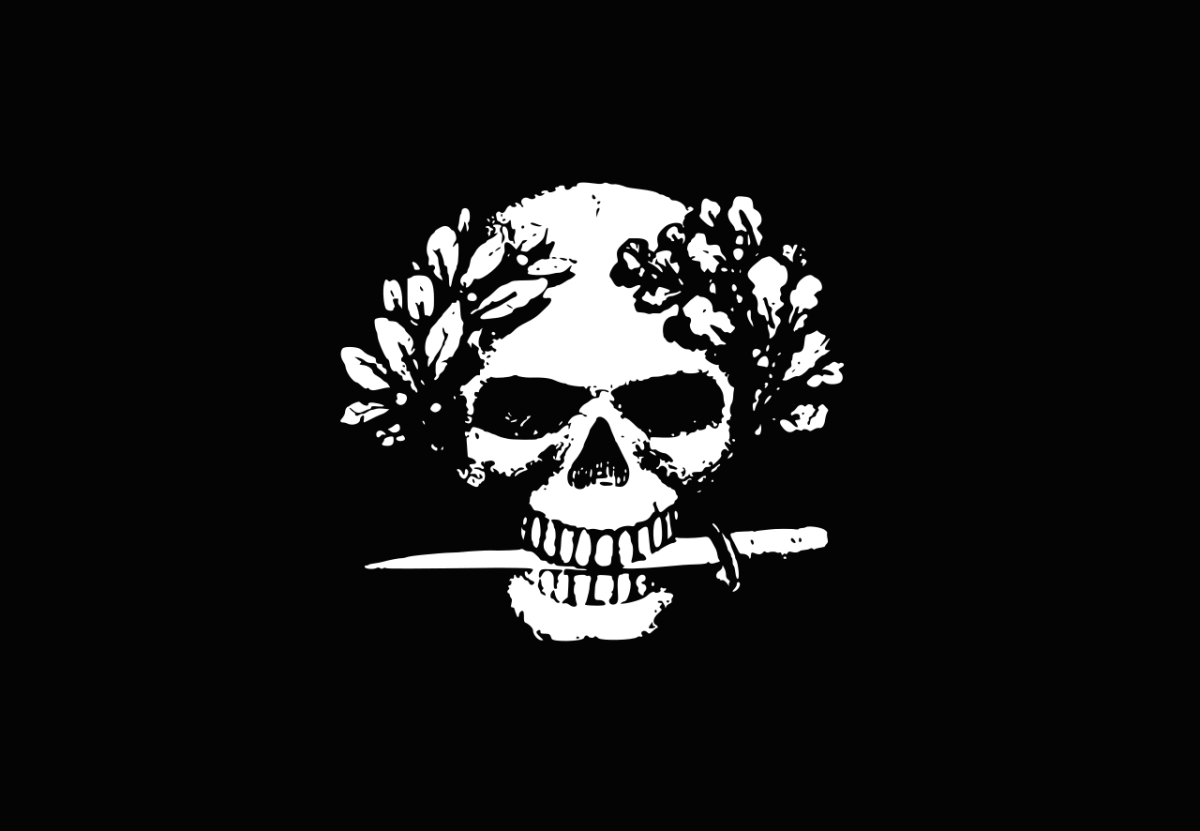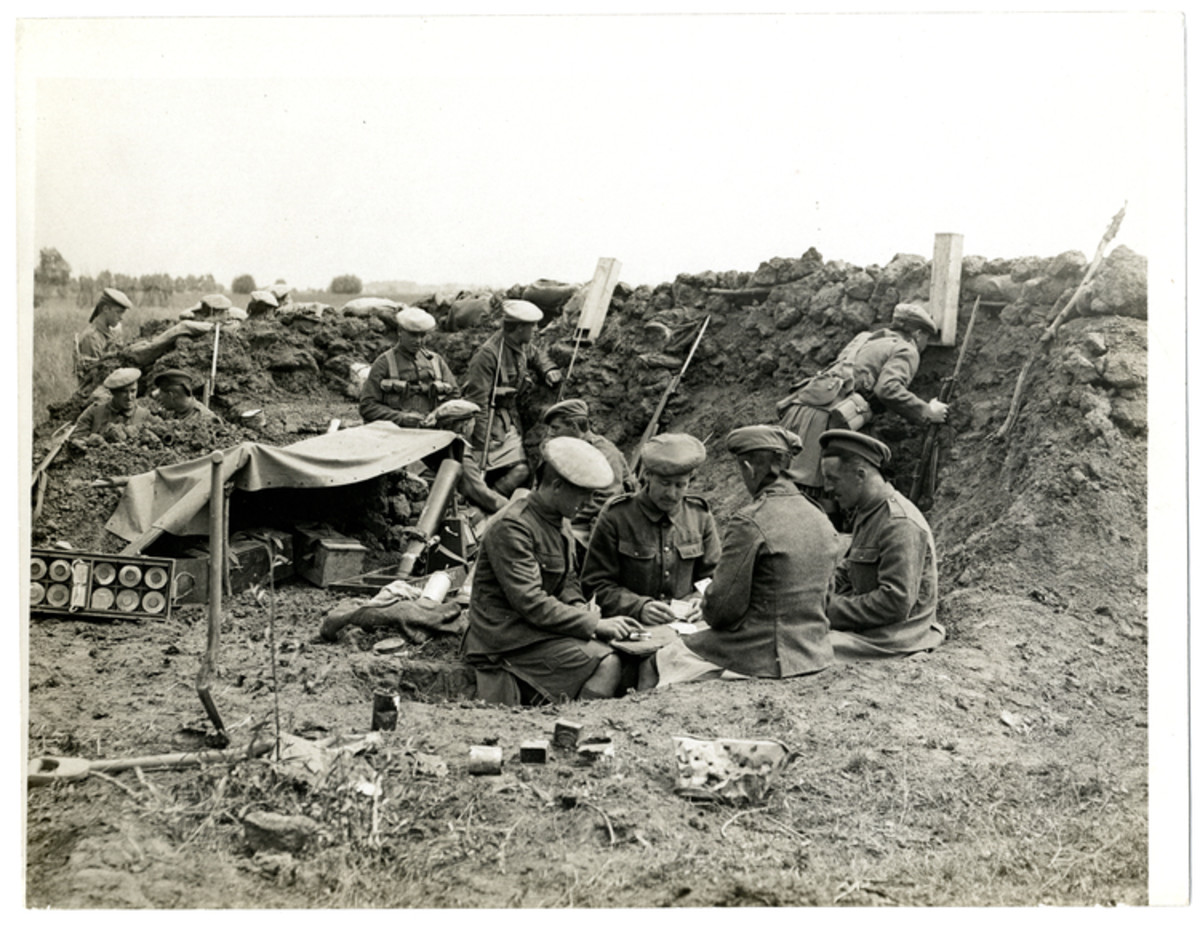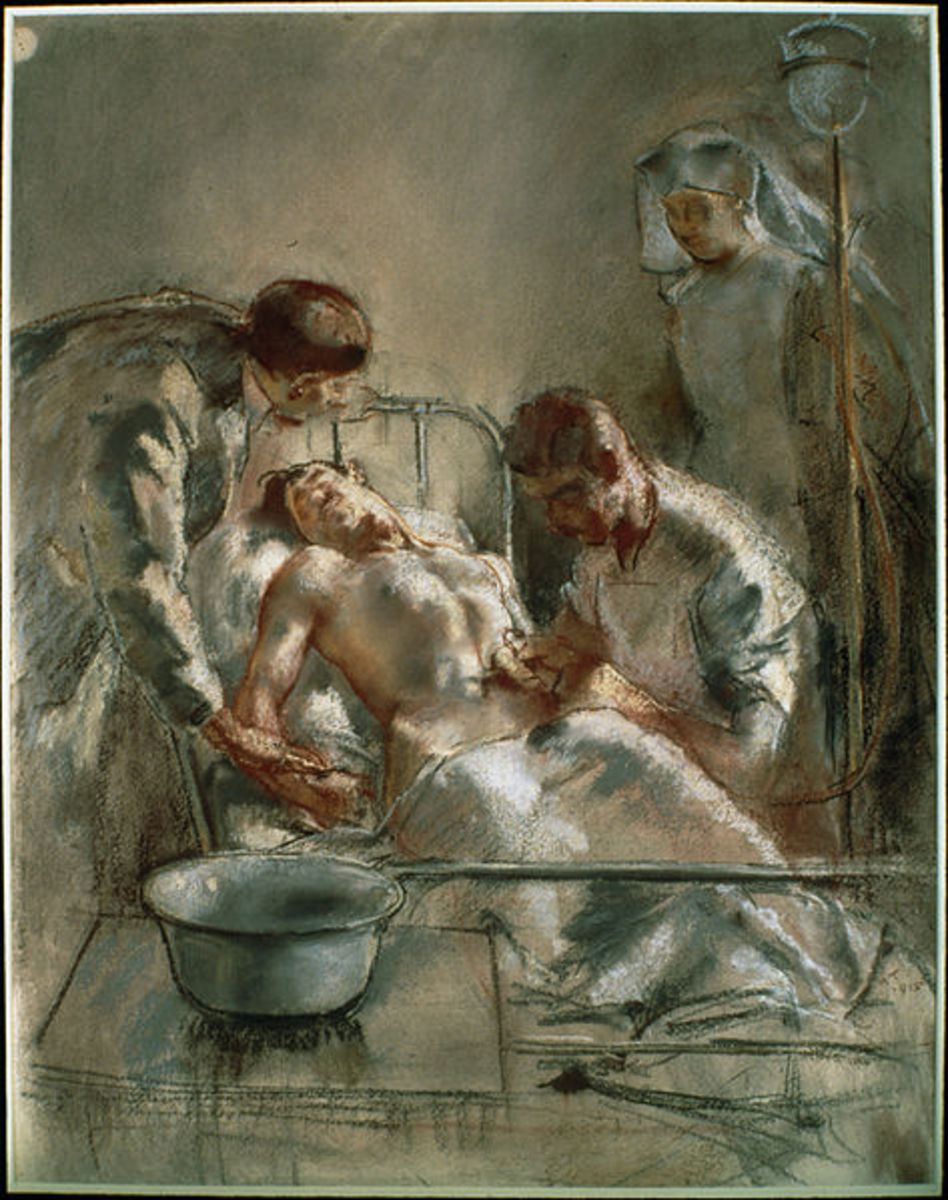- HubPages»
- Education and Science»
- History & Archaeology»
- History of the Modern Era»
- Twentieth Century History
Gavrilo Princip The Teenager Who Started World War I
Assassination of Archduke Franz Ferdinand
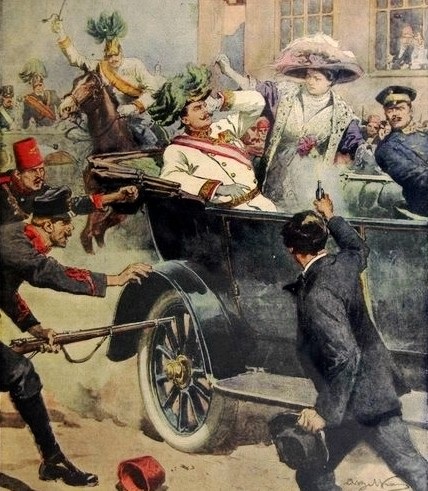
Two Bullets That Led a World War
One hundred years ago, on June 28, 1914, a young, a nineteen year old Serbian radical named Gavrilo Princip fired two shots from a semi automatic, 38 caliber pistol at close range into the back seat of the open car in which the heir to the Austrian Throne, Archduke Franz Ferdinand and his wife Sophie were riding.
Standing about five feet away, the first bullet hit the Archduke in the neck, piercing his jugular vein. The second hit his wife Sophie in the abdomen as she threw herself over her wounded husband in an attempt to prevent further injury to him.
While the assassination was well planned, things did not go as planned and the Archduke and his wife would not have been killed had it not been for a couple of chance coincidences.
Gavrilo Princip Did Not Act Alone
Gavrilo Princip, while young (he was a few weeks shy of his 20th birthday at the time of the assassination) and radical, was not a deranged loner out to make a name for himself like some others who have assassinated famous leaders.
Prison Photo of Gavrilo Princip
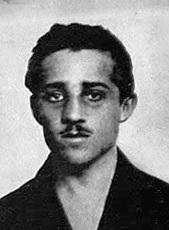
Instead, Princip was a part of a larger, professionally planned conspiracy. While many of the details of what actually happened still remain clouded in mystery and open to debate, the basic details are well known..
Princip was a Bosnian Serb who was passionate about an idea that was popular at the time. Princip’s passion was idea of the uniting all of the territories and states whose population consisted of South Slavs into their own Yugoslav(south slav) nation.
Kingdom of Serbia and Dream of Union of South Slavic Peoples
In 1914 the Kingdom of Serbia was an independent nation the parts of which had broken away from the Ottoman and Hapsburg (Austrian) empires over the course of the first half of the nineteenth century.
While the the population of the Kingdom of Serbia was mostly Serbs, one of the sub-groups that comprised the large South Slav group, Serbia was not the only territory in the area with a large Serbian population. Neighboring Bosnia-Herzegovina, which was a part of the Austro-Hungarian Empire, also included many Serbs. Sarajevo was its provincial capital.
The ambitions of many Serbians, especially those in the Serbian government, was to unite all of the South Slavs into a single Serbian led state. The fact that much of the territory populated by South Slavs was controlled by the Austro-Hungarian Empire led to tensions between the Kingdom of Serbia and the Austrian Empire.
Possible Direct Serbian Role in the Assassination
There is some evidence and rumors that Dragutin Dimitrijević, the Kingdom of Serbia’s Chief of Military Intelligence recruited Gavrilo Princip along with Nedeljko Čabrinović and Trifko Grabež all of whom were Bosnian Serbs and members of Young Bosnia, a revolutionary youth group.
Once trained and armed the young men and some others were sent back home to Sarajevo to assassinate the Archduke Franz Ferdinand during the Archduke’s planned visit to Sarajevo on June 28th.
In addition to his official position as Chief of Military Intelligence, Dimitrijević was also the head of Ujedinjenje ili Smrt, (Unification or Death), a secret Serbian society commonly known as the Black Hand. This group was founded in 1901 by members of the Serbian military with the aim of uniting all territories populated by South Slavs.
Proponents of this limited evidence claim that Dimitrijević planned the operation and then provided each of his recruits with a gun, bomb/hand grenade (in those days the words bomb and grenade appear to be used interchangeably to describe small, hand thrown explosives) and a cyanide pill. Their mission was to assassinate the Archduke and then kill themselves with the cyanide to prevent their being captured and interrogated.
Archduke Franz Ferdinand
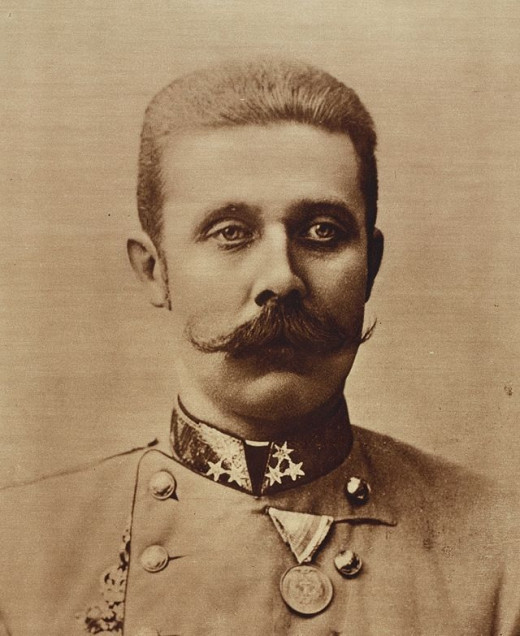
Dimitrijević, according to these accounts, then provided the conspirators with access to safe houses and assistance in sneaking back into Bosnia with their illegal weapons.
Claims of official Serbian complicity in the assassination are fortified by documentary evidence that implies that the Serbian Prime Minister, Nikola Pašić was not only aware of the plan to assassinate the Archduke but also tried, unsuccessfully, to halt the project. As with Dimitrijević’s role, the evidence to date is inconclusive and scholars are still divided as to the extent of Serbian complicity in the assassination.
In any case Pašić appears to have shared Dimitrijević’s dream of a united South Slavic nation but, if he did know about Dimitrijević’s assassination plan (and this assumes that Dimitrijević was behind the assassination) Pašić opposed the action.
Evidence that the Assassination was Locally Planned
Other accounts tend to credit Danilo Ilić, a twenty-one year old Bosnian journalist and Serbian nationalist, as the person who conceived the idea of assassinating the Archduke and then led the conspiracy.
Ilić, was also a member of the Black Hand and was probably at least in contact with the Black Hand Leader Dragutin Dimitrijević.
At the time many Serbs in Bosnia and Herzegovina wanted to be united with Serbia instead of Austria. Also many non-Serbs, joined the Serbs in wanting a union of all South Slavs into one Yugoslav state. The creation of an independent Yugoslav state was Princip’s motivation for the assassination.
Danilo Ilić Leader of Conspiracy
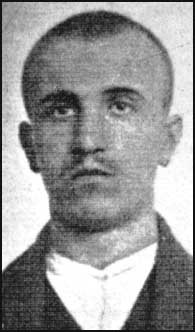
Ilić, a Bosnian Serb like Princip, was friends with Gavrilo Princip. In addition to Princip, Ilić also recruited five other Bosnian Serbs, the brothers Vaso and Veljko Čubrilović, Trifko Grabež,Cvjetko Popović and Nedeljko Čabrinović along with an impoverished member of Bosnia’s Muslim nobility, Muhamed Mehmedbašić, for his assassination team.
Danilo Ilić and all seven of the men he recruited were members of a radical organization Young Bosnia, which was a group consisting of students and other young people infatuated with popular ideas and causes of the that era which ranged from idealistic to radical. Like youth attracted similar groups before and since, these seven migrated from idealism to radical terrorism.
In addition to Danilo Ilić, Veljko Čubrilović and Muhamed Mehmedbašić were also a members of both Black Hand and Young Bosnia.
On Sunday June 28, 1914, Ilić placed the six assassins at key points along the route to be taken by Archduke Franz Ferdinand. The idea was that, if one missed or failed to have a clear shot at the Archduke, another of the assassins would have a chance further along the route.
This use of six assassins placed in different positions turned out to be necessary for the success of the assassination mission despite the fact that the mission did not go as originally planned.
First Attempt to Kill Archduke Thwarted and Second Attempt Failed
Muhamed Mehmedbašić, armed with a bomb (most likely a grenade of some type), was placed in the first position. However, as the motorcade and the Archduke’s car passed, Mehmedbašić choose not to throw his bomb. He later claimed that a policeman was standing behind him and he feared that if he pulled out the device the policeman would arrest him and prevent him from throwing it.
The next assassin along the route was Nedeljko Čabrinović. As the motorcade passed, Čabrinović threw the bomb he was carrying at the open car in which the Archduke, his wife and Governor Potiorek were riding in the back seat.
The bomb landed on the back end of the royal’s car, bounced off and rolled under another car behind in the motorcade before exploding. If the timing on its fuse had been shorter Čabrinović might have been the one who succeeded in killing the royal party. However, he only ended up wounding some people in the crowd and two members of the Archduke’s party in the car under which the bomb exploded.
Having failed in his mission, Čabrinović immediately took flight and, while fleeing, twice failed to kill himself. First by swallowing a cyanide pill and then by jumping into the Miljacka River.
The cyanide pill was apparently old and had lost much of its potency. It made him ill but didn’t kill him. As for the river, it was only about four inches deep and he was easily grabbed from the river by the police who were chasing him.
Nedeljko Cabrinovic
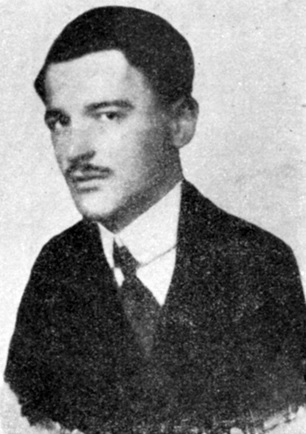
Princip Flees to a New Location and Awaits a Second Chance to Kill Archduke Ferdinand
Following the explosion, the car with the Archduke sped away and the surging crowd and chaos that followed Čabrinović’s bomb made it impossible to continue the mission at that time.
While his co-conspirators had apparently taken off following the failed bomb attempt, Princip wandered over to Franz Josef Street near the Latin Bridge and the Appel Quay on which the Archduke’s motorcade had been traveling. He had decided to remain in the area, where according to the newspapers, the Archduke would again pass on its way back to his train. This would give him one more chance to complete his deadly mission.
Following the bombing, the Archduke’s car sped away from the scene and straight to the Town Hall where a reception had been planned for the Archduke. Following the reception, Archduke Ferdinand decided to cancel the other events planned for the day and instead visit his injured companions in the hospital.
Governor Potiorek decided that it would be safest if, rather than traveling through the center of the city, that they should travel via the less congested Appel Quay along the Miljacka River to the hospital.
Wrong Turn Results in the Death of Archduke Ferdinand and His Wife Sophie
Governor Potiorek’s choice of route was good. However, his failure to inform the driver of the car of the chosen route proved fatal for the Archduke and his wife.
Gavrilo Princip was standing near the Moritz Schiller's cafe on Franz Josef Street killing time before the Archduke was scheduled to make his return trip to the train station. Suddenly he saw the open convertible carrying the Archduke, his wife and Governor Potiorek pass by quickly.
The car’s driver, not having been told of the plan to follow the Apple Quay all the way to the hospital, had turned onto Franz Josef Street intending on taking the more direct route through the center of town.
Governor Potiorek immediately told the driver to stop and turn around. The driver stopped, but when he shifted into reverse to turn around the car stalled.
Seeing his chance, Princip rushed to the stalled, open topped car and shot the Archduke at close range. He later claimed that his next target was Governor Potiorek, but his bullet was apparently blocked by the Duchess Sophia as she threw her body over her fallen husband in an effort to protect him from further harm.
Both Archduke Ferdinand and his wife, Sophia, died shortly after.
Gavrilo Princip was quickly subdued by police at the scene and arrested.
Area Where Archduke Ferdinand Assassinated
Approximate Location of where Gavrilo Princip shot Archduke Ferdinand and his wife Sophie.
Muhamed Mehmedbašić Escapes Capture by Austrian Authorities
Like his partner in the crime, Nedeljko Čabrinović, Gavrilo Princip was arrested at the scene of his double assassination.
During interrogation by the police, both Princip and Čabrinović gave the names of their associates in the assassination plot to the police and all except Muhamed Mehmedbašić were soon tracked down and arrested.
Mehmedbašić managed to escape to Montenegro where he was apprehended and arrested on Jul 12, 1914. Under questioning by his captors, he admitted to having participated in the plot to assassinate the Archduke. While awaiting extradition back to the Austrian authorities in Sarajevo he managed to escape and went into hiding.
Mehmedbašić was fortunate to have escaped, because, at age 28, he would have been executed by the Austrian authorities for his crime.
Following World War I, he returned to Sarajevo and was pardoned. He was killed on May 29, 1943 during World War II during ethnic violence led by the Nazi backed Croatian Ustaše group.
Muhamed Mehmedbašić
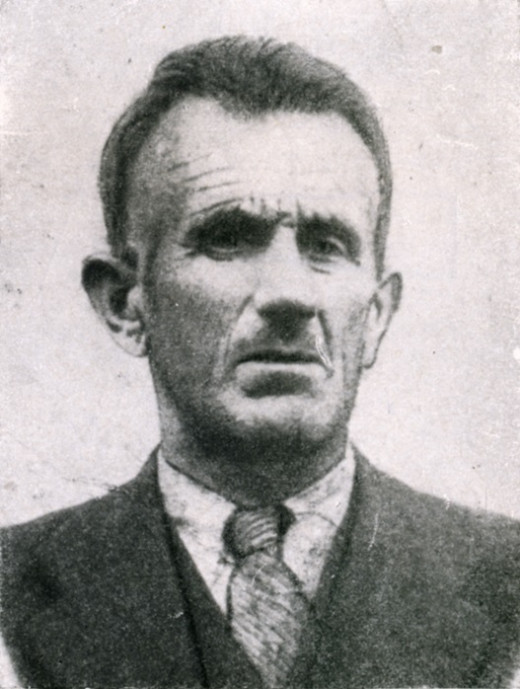
All 7 are Tried for Murder and Treason and 3 are Hanged
A total of 27 people were arrested and tried in conjunction with the assassination. Many of those arrested, among them Misko Jovanovic, were charged with aiding the conspirators. Jovanovic was charged with helping to smuggle the assassination team and their weapons into Bosnia from Serbia.
Nine of those accused of helping the conspirators were acquitted.
The main charge against all of the defendants was conspiracy to commit high treason which carried the death penalty. However, under Austrian law at the time, no one, regardless of their crime, could be executed if they were under age twenty when the crime was committed.
Danilo Ilić, Veljko Čubrilović and Misko Jovanovic were all in their late twenties at the time of the assassination and thus eligible for execution. The other five, Vaso Čubrilović Trifko Grabež, Cvjetko Popović, Nedeljko Čabrinović and Gavrilo Princip, who were armed and placed along the route to kill the Archduke were under twenty on June 28, 1914 and thus did not face execution
At the trial the five younger members tried to take the blame for the operation in an attempt to shield the older members of the conspiracy from conviction and execution.
Trial of Gavrilo Princip and His Accomplices
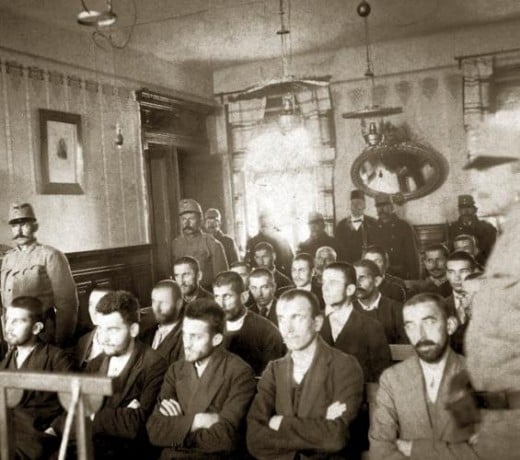
However, all seven members of the team plus Misko Jovanovic and eight others were found guilty of high treason.
Conspirators and their Sentences
Gavrilo Princip - 20 Years in Prison (died in prison in 1918)
Nedjelko Cabrinović - 20 Years in Prison (died in prison in 1916)
Trifko Grabež - 20 Years in Prison (died in prison in 1916)
Vaso Čubrilović - 16 Years in Prison (freed following WW I, died Jun 11, 1990 in Belgrade)
Cvjetko Popović - 13 Years in Prison (freed following WW I, died Jun 9, 1980 in Sarajevo)
Danilo Ilić - Death (Executed by Hanging on Feb 3, 1915)
Veljko Čubrilović - Death (Executed by Hanging on Feb 3, 1915)
Misko Jovanovic - Death (Executed by Hanging on Feb 3, 1915)
Danilo Ilić, Veljko Čubrilović and Misko Jovanovic received death sentences and were executed by hanging on February 3, 1915. Two others accused of assisting in the conspiracy were also sentenced to death but had their death sentences commuted and given prison terms.
Nedeljko Čabrinović, who threw the bomb that bounced off the car the Archduke was riding in, and Trifko Grabež both received 20 year prison terms, the maximum allowed by law for their crime and age. Both died of tuberculosis in 1916 while in prison.
Vaso Čubrilović, who was 17 at the time of the assassination, received a prison sentence of 16 years. At the end of World War I, he was released from prison by Allied troops. He went on to earn a PhD and became a professor at the University of Belgrade. He also held ministerial posts in the communist government of Yugoslavia under Marshal Tito. Čubrilović died on June 11, 1990 in Belgrade, Serbia at age 93.
Cvjetko Popović was an eighteen year old student when he participated in the plot to kill the Archduke. He was given a sentence of 13 years in prison. Like his friend, Vaso Čubrilović, he survived prison and was released at the end of World War I. Popović returned to Sarajevo where he initially became a professor of philosophy and eventually Curator of the Ethnographic Department of the Sarajevo Museum. He died in Sarajevo on June 9, 1980 at the age of 84.
Gavrilo Princip and His Dream of a Yugoslav Nation
Princip narrowly missed execution for his crime. Had the crime taken place a month later he would have been subject to execution due to his turning 20 on July 25th of that year.
Like Nedeljko Čabrinović and Trifko Grabež, he received a 20 year prison sentence the maximum allowed for his age. Also like Čabrinović and Grabež his health was not good. All three seemed to have been suffering from some form of tuberculosis most of their lives and were thus not strong enough to survive the harsh prison conditions. Princip died of tuberculosis while in prison on April 24, 1918.
Gavrilo Princip always claimed to be fighting for the creation of an independent South Slav state.
Ironically, his murderous act did lead to, at least for a couple of generations, the creation of the Yugoslav state he dreamed of.
World War I did result in both the break-up of the Austrian Empire and a realignment of borders in Europe which resulted in the creation of a number of new nations among them the South Slav nation of Yugoslavia.
However, while Yugoslavia was made up people known as South Slavs, most people tended to associate more with their specific sub-group - Serbians, Bosnians, Croatians, Slovenes, Montenegrins, etc. - rather than with the larger South Slav umbrella group. This resulted in ethnic tensions and violence that plagued Yugoslavia from its creation following World War I to its final break-up in 2006.
What really united people like Gavrilo Princip and others dreaming of a Yugoslavia was not their South Slav identity, but their perceived common enemy the Austrian Empire. Once Austro-Hungary ceased to exist as the ruler of most of southern Europe, people were free to resume their ancient ethnic hatreds.
Gavrilo Princip as a Tool of Serbian Interests
A second irony is the fact that Archduke Franz Ferdinand was set succeed his ailing uncle, Austrian Emperor Franz Joseph (who died in November 1916, two years after Franz Ferdinand was assassinated). Archduke Franz Ferdinand was supposedly considering creating a third kingdom similar to what had been done with Hungary in 1867.
In 1867 the Kingdom of Austria had been divided into the Kingdom of Austria and the Kingdom of Hungary. The same king ruled both and both had the same army and customs union but were otherwise separate self-governing entities. Archduke Ferdinand was apparently considering using the same model to create a third kingdom, the Kingdom of Yugoslavia, which would provide the South Slavs with their own nation with him as king.
However, the Kingdom of Serbia wanted to do the same thing by pulling the Austrian territories inhabited by the South Slaves away and making them a part of the Kingdom of Serbia.
Gavrilo Princip’s dreams might have been realized had Archduke Franz Ferdinand lived and decided to create a Kingdom of Yugoslavia for the South Slavs within the Austrian Empire. However, Princip’s radical idealism and youthful impatience blinded him this possibility which made him and his youthful associates an easy tool for the Serbian spymaster, Dragutin Dimitrijević, to manipulate.
Tragic Result of Gavrilo Princip’s Murderous Action
Gavrilo Princip and his other youthful conspirators were spared execution for their murderous deed because of their youth.
However, in the World War that followed, thousands of other young men, some four or more years younger than the nearly twenty year old Princip, were conscripted and lost their lives as soldiers in that war.
While he started out as a youthful idealist joining in advancing a cause shared by many at that time, Gavrilo Princip at some point crossed the line from idealist to radical terrorist. Like many a radical, Princip was impatient and saw assassination as a quick way to achieve the change he sought.
Instead, his action resulted in misery and death for millions.
© 2014 Chuck Nugent


